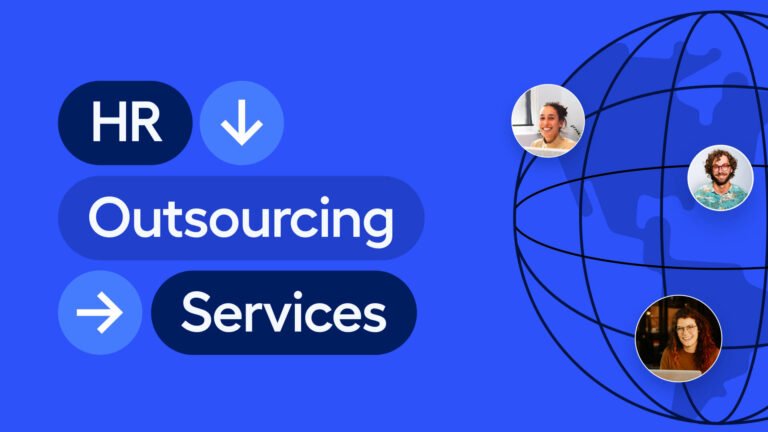Employee Stock Ownership Plans (ESOPs), also known as employee stock options, enable employees to buy stock in their firm, which benefits both the employees and the company. Companies offer these plans as a part of salaries or bonuses to their employees and advisors. Employers can also offer bonus ESOPs as performance rewards.
According to a survey, 43% of Indian IT companies have offered ESOPs to 90% of their employees. Meanwhile, more than 75% of non-IT firms offer ESOPs to their top management employees. Furthermore, there are hundreds of ESOP programs in operation in the United States, and they are present in eight out of ten FTSE 100 firms in the United Kingdom.
It is undeniable that ESOPs are a modern and dynamic method of rewarding talent. However, you should know a few things about ESOPs before establishing a pool of options for your company.
5 Benefits of ESOPs For Both Business Owners and Employees
A Strong Motivational Tool
Individual employees will immediately benefit from a firm’s success and feel a sense of responsibility with a share of the company. As a result, you will notice an increase in productivity. An employee’s general morale and trust in the organization strengthen when they have a financial stake in the company.
Tax-favorable and Sustainable
Multiple tax benefits are available with ESOP schemes. Contributions to ESOPs are tax-deductible for C-corporations, and the amount owed by the ESOP is tax-free for S-corporations. Furthermore, the contributions made by employees are not taxed. Like a traditional retirement plan, individual employees only pay taxes on the ESOP when they withdraw the funds after retirement. Stock donations, as well as contributions used to repay ESOP loans, are tax-deductible.
Retain Promising Talent
Employees who associate with a company for less than two years lose their stock options. When an employee stays in the company for four years, they may receive 40% of their stock when they leave. This vesting process encourages employees to stay with the company for as long as possible to receive the best reward. Having the chance to own a firm’s share can be an appealing bonus for top individuals looking for new work possibilities because it gives a solid retirement plan.
Smooth Ownership Transition
With an ESOP in place, an owner can step back from their firm without worrying about the upheaval of a governance shift. This helps the organization maintain long-term connections with suppliers, distributors, and clients while retaining management.
A Reliable Exit Strategy
COVID-19 decreased merger and acquisition (M&A) activity across industries, leaving business owners with fewer options for retirement. However, owners will not have to sell their firm to a third party if they establish an ESOP, as they can trust the employees to hold the shares. They can also keep their information private and not share it with potential buyers. Owners who wish to remain associated with their company for a long time can contribute shares to an ESOP over time rather than all at once.
5 Types of ESOPs Companies Issue
There are a variety of ESOPs that will suit different firms, and each sort operates uniquely. Here are the five primary types of employee stock ownership plans, along with a description of how they work:
Call Option Plans (also known as Employee Share Option Plans)
When you give call option ESOP schemes, the employee retains the right to purchase the firm’s shares at a certain price and duration. Call options can be obtained by staying with a firm for a specific amount of time, performing well, or a combination of the two.
Following are the typical reasons for preferring call options:
- Creating a sustainable cash flow
- Managing compensation costs
- Limiting expenses before a sale or a liquidity event
However, you must draft and implement these plans before allocating capital. Doing so will help calculate the company’s fair value, aiding in investment rounds.
Employee Stock Purchase Plan (ESPP)
In this type, you can offer shares to the employees at a lower rate than the fair market value. However, the employee must serve a minimum period in the company and hold the stocks for a certain duration. Usually, businesses rely on ESPPs to cut down their IPO expenses.
Restricted Stock Units (RSU)
RSUs are given to employees under a reward system for their excellent performance. An employee receives such shares under specific conditions. For example, if the your stock prices are rising consistently, an RSU plan will allot certain shares to the employees after the stock reaches a particular price.
Stock Appreciation Rights (SARs)
SARs are not traditional ESOP plans; however, they are treated as one. In this plan, employees can earn cash rewards on your stock appreciation within a definite period. SARs are the most beneficial to the employees as they do not have to bear any downside risk. Furthermore, they have the same tax advantages as other ESOPs. This plan is increasingly rewarding to professionals who dedicate themselves to a company for a long time.
Phantom (also known as Bonus Share Schemes)
Employees retain a contractual right to a monetary sum if certain events occur or certain goals are met under a phantom share plan. This plan requires you to pay a future cash bonus equivalent to the value of a specified number of shares. Although the phantom stock can be changed to actual shares during certain trigger events, there is usually no legal transfer of share ownership.
Phantom share schemes, which are typically intended for a healthy profit share, provide some advantages of formal share ownership without involving the physical transfer of shares or options.
Important ESOP Terms You Should Know
There are key milestones in an ESOP plan which concern both the employer and the employee. Over a period defined in the plan, the allocated stocks mature to either a sale or long-term preservation.
The following terms will help you navigate a typical ESOP lifecycle:
Vesting Period
A vesting period refers to a duration in which the shareholder cannot claim the options and access their rights. In a call option plan, the option cannot be transformed into a share until it has been vested. The most popular forms of vesting are:
- Automatic time-based vesting
- Manual/performance-based vesting
- A combination of both
Option vesting for manual/performance-based vesting occurs after achieving a stated milestone or performance metric, or sometimes at the time of grant. If the options do not vest (for example, because the milestone is never met), they will lapse and the employee will no longer be able to exercise them. They can then be recycled back into the option pool and used for other employees or offers.
Exercising The Options
After the options have vested, the employee can exercise them by acquiring shares at a price specified in the agreement. Employees who exercise their options become shareholders in the company and have the same rights as other shareholders. The exercise price, also known as the strike price, is the amount paid by an employee if they choose to exercise their options.
Expiration of Call Options
The exercise period refers to when a worker can exercise their options. If employee stock options expire without exercising, they can be re-added to the option pool. Expiration dates must also consider policies for employees who may depart the company on good or poor terms.
Liquidity Events
An event, such as a purchase, merger, Initial Public Offering (IPO), etc. that allows the shareholders to exit the ownership and cash out their shares is a liquidity event. The option plan deed for ESOPs will include information on what occurs if the company has a liquidity event, such as whether unvested options automatically vest or expire.
From An Employee Perspective
Employee stock ownership plans (ESOPs) allow employees to have a direct stake in the company’s success. As a result, they will be motivated to achieve organizational objectives and partake in the success story. Over time, the employees will reap two-fold profit as they grow with experience and reap the benefits of the rising stock price.
ESOPs can allow employees to potentially make significant tax savings, usually without finding the funds to pay a substantial lump sum payment upfront. For example, an employee may not be required to pay tax on options until they have reaped a financial benefit, either through vesting or exercising.
From An Employer Perspective
ESOPs can be a powerful tool for motivating employees. They can be a great approach to finding the best talent in the international marketplace where top applicants are in high demand worldwide. Furthermore, ESOPs incentivize employees to help the firm expand and flourish by allowing them to partake in its success and focus on long-term corporate goals.
According to reports, organizations employing ESOPs have reported lower employee turnover than the industry average. Hence, such ownership plans have proven helpful for businesses in these uncertain post-Covid times. While many companies are experiencing cash flow problems, the demand for experienced and committed personnel has never been greater. ESOPs can assist in alleviating this stress by providing options rather than cash incentives, allowing the company’s cash flow to remain stable.
According to Rutgers University research, companies with employee stock ownership plans had much higher sales growth during and after the 2008-09 financial crisis. Furthermore, companies with ESOPs faced fewer obstacles during the COVID-19 pandemic regarding job retention, pay, benefits, and workplace safety.
The benefits of ESOP schemes can easily outweigh the expenses of creating and operating them. Companies with the happiest employees have higher productivity, stronger customer engagement, better retention, and an average of 21% higher profitability.
How Multiplier Can Help In Offering ESOPs
The utility of ESOPs is gigantic, considering the uncertain economic conditions and the need to plan for the future. With global employment now becoming a swiftly-adapted norm, ESOPs are a modern and far-sighted method to award valuable employees.
With Multiplier, you can offer ESOPs to new talent during the onboarding process. Our digital platform allows you to curate offer letters, include benefits, add an options plan and much more to ensure a seamless hiring procedure. Connect with us to know how you can integrate ESOPs into your compensation plan and attract talent across the globe.







